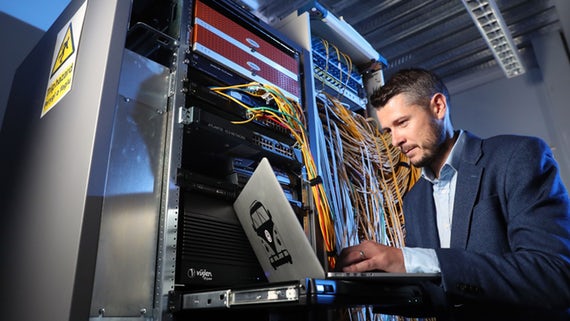How to Find a Computer Forensics Firm
- Introduction
- Understanding the Need for a Computer Forensics Firm
- Factors to Consider When Choosing a Computer Forensics Firm
- Researching Potential Computer Forensics Firms
- Questions to Ask When Interviewing Computer Forensics Firms
- Evaluating the Services Offered by Computer Forensics Firms
- Reviewing the Reputation of Computer Forensics Firms
- Making the Final Decision and Hiring a Computer Forensics Firm
- Conclusion and Next Steps
Introduction
When it comes to dealing with digital evidence, finding a reliable computer forensics firm is crucial. Whether you are an attorney, a business owner, or an individual seeking justice, hiring the right computer forensics firm can make or break your case. In this article, we will guide you through the process of finding a computer forensics firm that meets your needs and expectations.
Understanding the Need for a Computer Forensics Firm
First and foremost, it is important to understand why you might need a computer forensics firm. Computer forensics is the process of collecting, analyzing, and preserving electronic data in a way that is admissible in court. Computer forensics firms specialize in uncovering digital evidence, such as emails, text messages, and social media posts, that can be used in legal proceedings.
Factors to Consider When Choosing a Computer Forensics Firm
Choosing the right computer forensics firm can be a daunting task. There are several factors to consider, including their experience, certifications, and reputation. It is important to choose a firm that has a proven track record of success and is familiar with the type of case you are dealing with.
Researching Potential Computer Forensics Firms
Once you have identified potential computer forensics firms, it is important to research them thoroughly. Look for reviews and testimonials from previous clients, and check their website to see if they have experience in your particular industry or type of case. You may also want to ask for referrals from colleagues or other professionals in your network.
Questions to Ask When Interviewing Computer Forensics Firms
When interviewing potential computer forensics firms, there are several questions you should ask to ensure they are a good fit for your needs. Ask about their experience in similar cases, their methods for collecting and preserving evidence, and their certifications and credentials. You should also ask about their fees, turnaround time, and any guarantees they offer.
Evaluating the Services Offered by Computer Forensics Firms
Once you have gathered information from potential computer forensics firms, it is important to evaluate their services carefully. Look for a firm that offers a wide range of services, including forensic analysis, data recovery, and expert witness testimony. You should also evaluate their technology and software to ensure they are up-to-date and state-of-the-art.
Reviewing the Reputation of Computer Forensics Firms
Reputation is everything in the world of computer forensics. Look for a firm that has a strong reputation in the industry, and check for any disciplinary actions or complaints against them. You can also check with professional organizations, such as the International Association of Computer Investigative Specialists (IACIS), to see if they are in good standing.
Making the Final Decision and Hiring a Computer Forensics Firm
After careful consideration of all the factors, it is time to make a decision and hire a computer forensics firm. Choose a firm that you feel comfortable working with and that has a proven track record of success. Make sure to discuss fees and timelines upfront, and sign a contract that outlines the scope of the work and the responsibilities of both parties.
Conclusion and Next Steps
Now that you know how to find a computer forensics firm, it’s time to take action. Research potential firms, interview them carefully, and choose the one that best fits your needs. With the right computer forensics firm on your side, you can rest assured that your digital evidence is in good hands.

